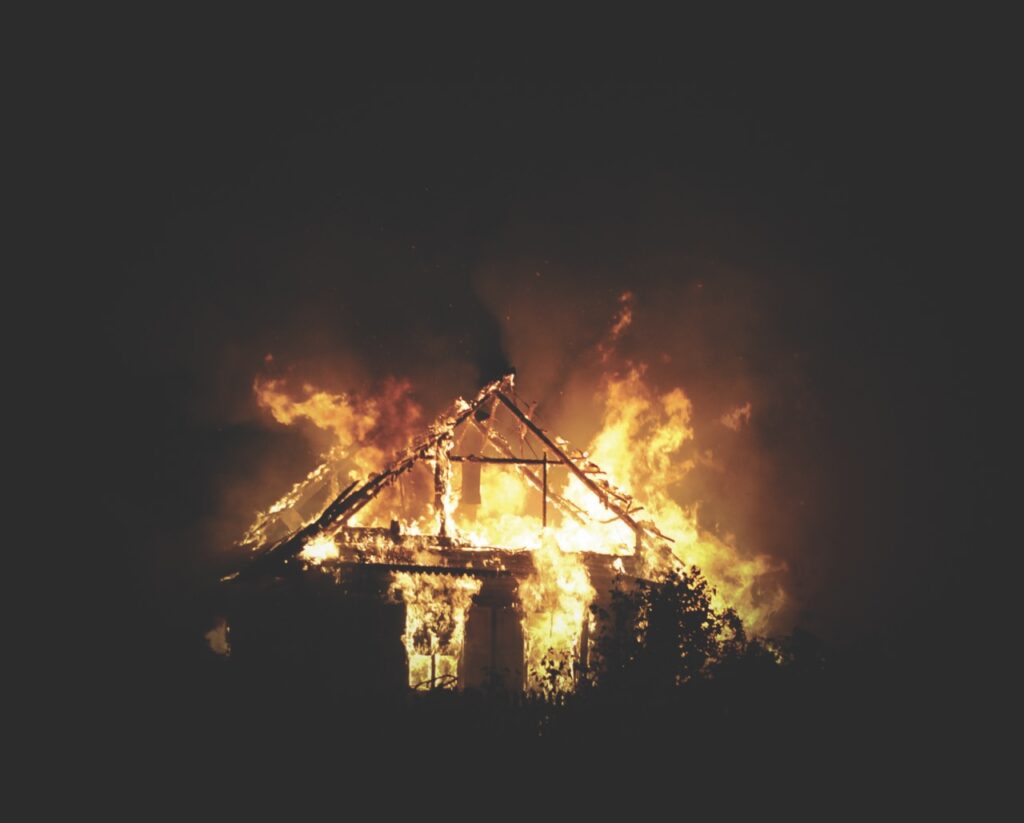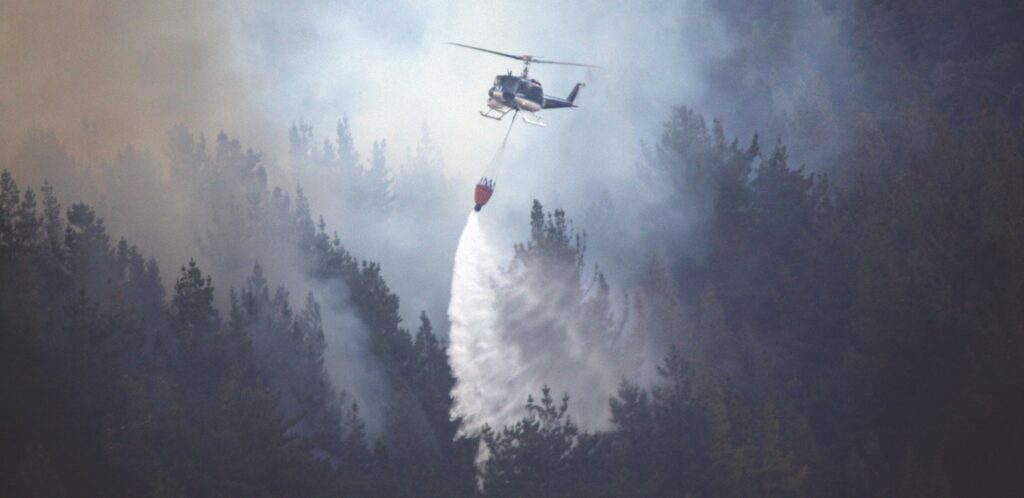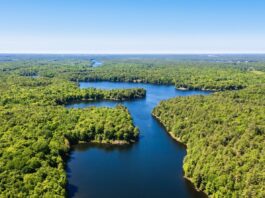By Tim Winegard, MSc | Owner & Certified Arborist, Muskoka Tree Solutions
Unattended campfires, roadside ignitions and lightning strikes have all led to large-scale wildfires and property loss in Ontario’s cottage communities. For owners, this is a worst-case scenario. But how do you determine whether your property is at risk, and what steps can be taken to protect it?
A property’s underlying risk is dynamic, because the ignition sources and fuel conditions necessary for fires to start and spread shift through time. As disturbances like wind, disease or land use and development shape the landscape, our local and regional fire risks change as well.
By working with local arborist services like Muskoka Tree Solutions, owners can develop a better understanding of their property’s short and long-term risk, while developing a mitigation plan specific to their vulnerabilities.
How is fire risk influenced by a property’s forest type and growing conditions?
Properties with sunny exposures and sandy or rocky soil conditions that support pine and oak species tend to be the most fire-prone in our region. In part, that’s because these trees typically colonize drier locations, where their resinous needles and woody debris accumulate on the forest floor.
Pine and oak are thickly barked trees. They have evolved to survive low-intensity fires that remove understory debris while maintaining the light levels and exposed soil conditions for these species to thrive.
Conversely, shade-tolerant combinations of maple and hemlock are poorly adapted to fire exposure and typically colonize, as well as dominate, areas with richer and wetter soils. The deep shade produced by these species creates an understory microclimate with higher levels of humidity and soil water retention. This adaption helps these shade-loving species maintain their foothold in the forest, by reducing the likelihood of fire while promoting their desired growing conditions.

How does a property’s fire risk change over time?
Natural disturbances are major drivers of change in both of these forest types. The age, density and species groupings of trees found today in Muskoka have been shaped by the size, frequency and intensity of past disturbances. On a broad scale, disturbances like fire have razed forests to the ground, resetting the trajectory of forest growth. At the local scale, disturbances like wind and insects contribute to the structural complexity of the forest through their influence on the buildup of woody debris, logs and dead standing trees. Areas with establishing forests often lack the fuel volume to initiate major forest fires. As forests mature, downed and standing deadwood volumes accumulate. Despite the fact that these features can provide valuable habitat to wildlife, excessive deadwood also acts as a fuel source and pathway for fire to spread through the understory and into the canopy.

What are the red flags for fire risk and their mitigation strategies?
Although prolonged drought can create the fuel conditions necessary for fire in almost all forest types, a property’s fire risk is more commonly linked to how well fuel sources are being managed. Property owners should create firebreaks around the cottage, sauna, firepit, generator and outdoor cooking areas. Make sure they are free of small woody debris, needles, dead standing trees and over-reaching and ground-level branches. Managing these fuel sources along your road, driveway and neighbouring frontages is key to both preventing fire spread and mitigating against its encroachment.
Fire risk can be dramatically reduced by engaging trained professionals in pruning utility corridors where branches can chafe and crack coated wires or make contact with uncoated lines. Piles of sticks, needles and debris can be consolidated away from potential ignition sources, to provide habitat for wildlife and help build the soil.

Finally, lightning often strikes the tallest tree in the forest. Properties that are home to these isolated giants can benefit from pruning that creates full-canopy spacing around the tree where contact is minimized with their younger neighbours. In more extreme circumstances, trees can be grounded by installing a lightning protection system. This mitigation strategy can minimize the impact of a direct strike on the tree, and reduce the likelihood of fire spreading from the canopy should one occur.
Extreme weather is becoming a more unpredictable challenge for cottage country. Learning how to assess your property’s exposure to risk is important for mitigating against losses. Working with professionals that see how local forest conditions contribute to risk is the best insurance policy for the safety of our families, properties and broader cottage communities.
Working with professionals that see how local forest conditions contribute to risk is the best insurance policy for the safety of our families, properties and broader cottage communities.
With summer in full swing, we hope you are enjoying a safe and relaxing cottage season. For more information on Muskoka tree care and forest management, or if you have questions or concerns about your property’s potential vulnerabilities, schedule an assessment with Muskoka Tree Solutions at muskokasolutions.com.






